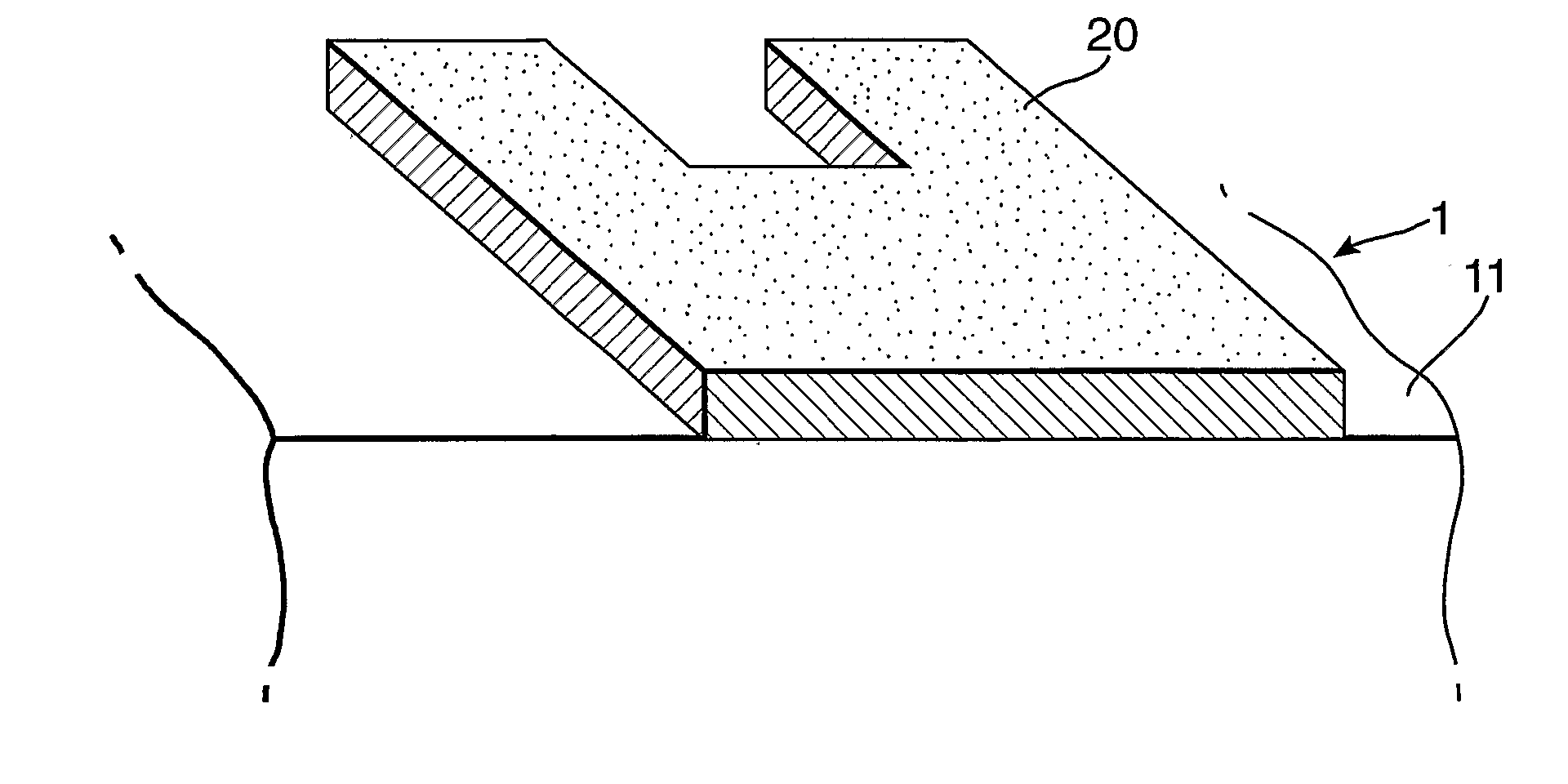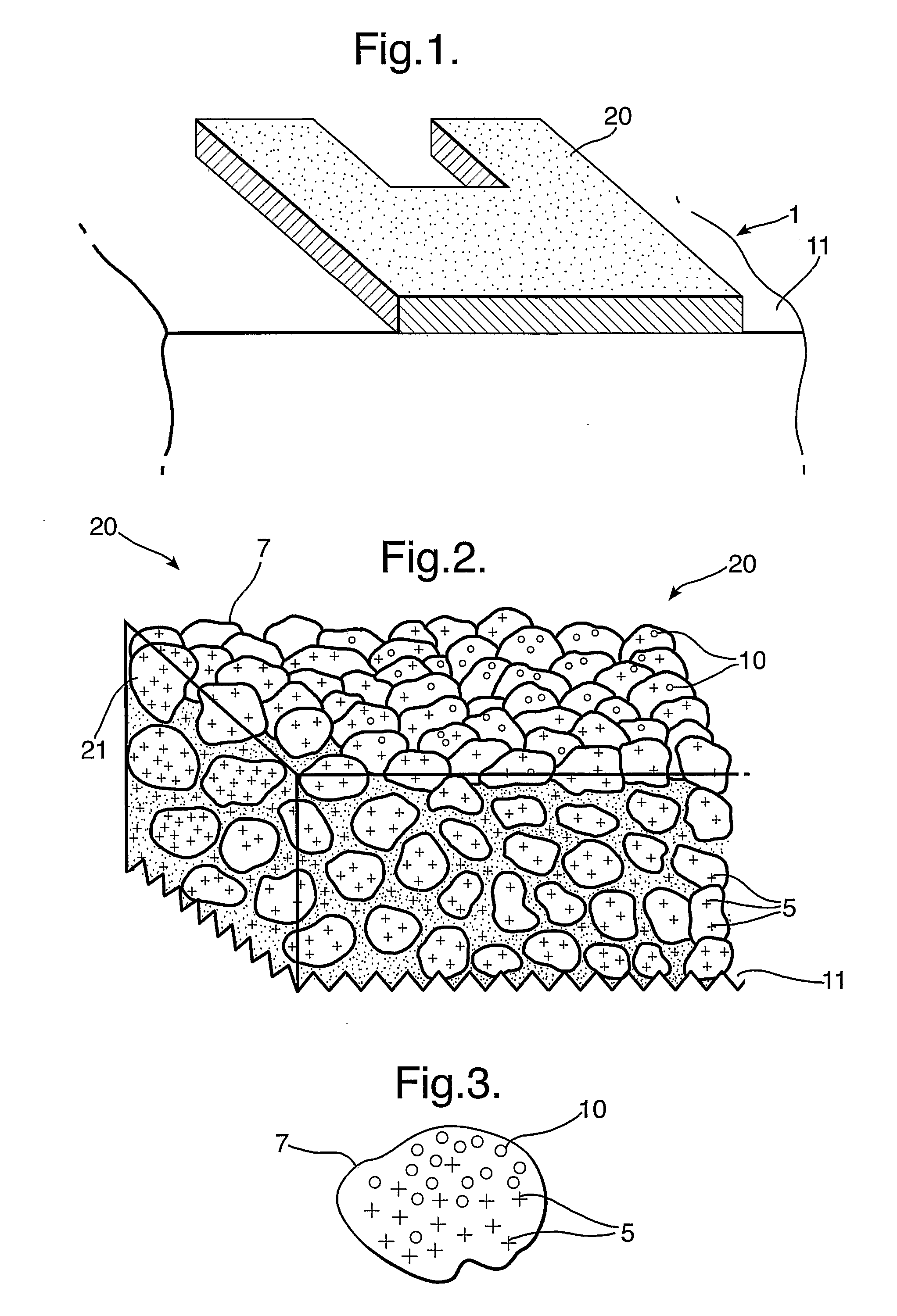Active Filler particles in Inks
- Summary
- Abstract
- Description
- Claims
- Application Information
AI Technical Summary
Benefits of technology
Problems solved by technology
Method used
Image
Examples
specific examples
Example 1
[0058] A screen printing ink (supplied under the trade mark Acheson 6018S) was used as the ink formulation, to which was added titanium dioxide 2 μm at 30% by weight as a filler there was no reducible silver slat present. The control ink composition was screen printed onto two sides of a sheet of polyester in the design of a “Checkpoint®” system electronic article surveillance, (EAS), 1-bit tag.
[0059] The ink was cured by heating the sample to 80° C. for 10 minutes, causing the ink composition to solidify and adhere to the substrate. At this stage the ink had no electrical conductivity. The printed pattern of cured ink was then immersed into a solution of commercially available Enthone 2130® electroless copper at 46° C. as expected there was no electroless deposition of copper metal.
example 2
[0060] A screen printing ink (supplied under the trade mark Acheson 6018S) was used as the ink formulation, to which was added titanium dioxide 2 μm at 30% by weight as a filler and silver nitrate 3% by weight. The silver nitrate was pre-dissolved in an aliquot of ethyl lactate / water to aid the transfer and mixing with the screen printing ink. The activating ink composition was screen printed onto two sides of a sheet of polyester in the design of a “Checkpoint®” system electronic article surveillance, (EAS), 1-bit tag. This tag behaves as an inductively coupling resonator and employs an inductor, L and capacitor, C. A tag of this type can be made to resonate at a selected frequency by changing the design to provide different values of inductance and capacitance.
[0061] The ink was cured by heating the sample to 80° C. for 10 minutes, causing the ink composition to solidify and adhere to the substrate. At this stage the ink had no electrical conductivity. The printed pattern of cure...
example 3
[0062] The same ink used in example 1 was printed and cured into the design of a dipole antenna and also a patch antenna, both commonly employed in UHF RFID tags and other communications devices. The ink composition was cured by heating to 80° C., which when solidified was immersed in the same solution of electroless copper used in example 1. Electroless copper deposited onto the printed ink to a thickness of 2 microns. In this instance the designs did not cause high resistance losses for the thickness of metal and the operating frequency meant that sufficient electromagnetic energy could be absorbed and re-emitted to provide effective devices, without the need for electrodeposited metal.
PUM
| Property | Measurement | Unit |
|---|---|---|
| Fraction | aaaaa | aaaaa |
| Fraction | aaaaa | aaaaa |
| Percent by mass | aaaaa | aaaaa |
Abstract
Description
Claims
Application Information
 Login to View More
Login to View More - R&D
- Intellectual Property
- Life Sciences
- Materials
- Tech Scout
- Unparalleled Data Quality
- Higher Quality Content
- 60% Fewer Hallucinations
Browse by: Latest US Patents, China's latest patents, Technical Efficacy Thesaurus, Application Domain, Technology Topic, Popular Technical Reports.
© 2025 PatSnap. All rights reserved.Legal|Privacy policy|Modern Slavery Act Transparency Statement|Sitemap|About US| Contact US: help@patsnap.com


